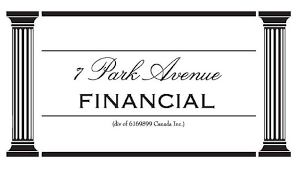|
Business Owner's Guide to Understanding Factoring Rates
Accounts Receivable Factoring Rates: What Every Canadian Business Owner Must Know
YOU ARE LOOKING FOR INFO ON FACTORING ACCOUNTS RECEIVABLE AND THE FACTOR COST OF THIS FINANCING!
The Business Lifeline: Leveraging Factoring for Cash Flow
UPDATED 07/14/2025
You've arrived at the right address! Welcome to 7 Park Avenue Financial
Let us help your firm just like our hundreds of other satisfied clients.
Financing & Cash flow are the biggest issues facing business today
ARE YOU UNAWARE OR DISSATISFIED WITH YOUR CURRENT BUSINESS FINANCING OPTIONS?
CONTACT US
CALL NOW - DIRECT LINE - 416 319 5769 - Let's talk or arrange a meeting to discuss your needs
EMAIL - sprokop@7parkavenuefinancial.com

Factoring Unveiled: A Deep Dive into the Costs and Returns
The Growing Popularity of Accounts Receivable Financing in Canada
Canadian business owners and financial managers who are considering financing accounts receivable often ask us how they can calculate, or more so, understand the factor cost of factoring accounts receivable.
There are a whole bunch of factors (excuse the pun) that seem to be coming together to make the financing of accounts receivable a high-growth, popular, and accepted method of business financing in Canada.
The reality is that even just a few years ago most business owners did not even realize that they could sell their accounts receivable to a private nonbank firm, gaining valuable working capital—i.e., cash flow—in the process.
Cash Flow Crisis: When Outstanding Invoices Threaten Your Business
Outstanding invoices drain your cash flow while bills pile up.
Traditional banks won't help fast enough. Your business suffers while customers take their time paying.
Let the 7 Park Avenue Financial team show you how Accounts receivable factoring rates determine how quickly and affordably you can access your earned money. Smart business owners compare factoring costs against the price of delayed growth and missed opportunities.
3 Uncommon Takes on Accounts Receivable Factoring Rates
- The "Hidden Discount" Perspective: Many business owners view factoring rates as expensive, but they're actually paying for cash flow certainty. When you factor invoices at 1.5-2%, you're essentially buying insurance against late payments, bad debt, and the opportunity cost of tied-up capital.
- Industry-Specific Rate Variations: Factoring rates aren't one-size-fits-all. Construction companies often pay higher rates due to lien risks, while medical billing factors can secure rates under 2% because of government payment reliability. Your industry's payment patterns directly influence your factoring costs.
- The Volume Leverage Strategy: Most businesses negotiate rates backwards. Instead of focusing solely on the percentage, successful companies build relationships with factors who offer rate reductions as volume increases, creating a partnership that becomes more cost-effective over time.
The Drive toward Factoring
Business is being driven to this method of Canadian business financing out of a very basic need: meet payrolls, make fixed-term obligations, and purchase products and services.
And when your customers make you wait 30, 60, and unfortunately 90 days for your funds, all of a sudden factoring, also known as invoice discounting and receivable financing, becomes very popular. Not hard to understand.
The Need for Understanding Accounts Receivable Factoring Cost
Business owners want to know more about factoring and receivable financing simply because they recognize that cash flow challenges hinder them from growing, and yes, even surviving.
And, we are sorry to say, many clients simply can't get the bank financing they need to fund and grow their business—that isn't necessarily a condemnation of Canadian chartered banks. It's a case of individual financing challenges within the current credit crunch and global economic challenges.
Opportunity Cost of Not Factoring
While the nominal fees associated with factoring are often discussed, the opportunity cost of not factoring is rarely considered.
For some businesses, not leveraging factoring could mean missed opportunities for growth or lost discounts from suppliers for early payment.
By focusing on the cost of factoring alone, businesses may overlook the potential revenue growth or savings that could have been realized if they had immediate access to the cash tied up in receivables. This can include the ability to take on new projects, invest in marketing, or simply negotiate better terms with suppliers for bulk purchases.
Analyzing Factor Cost
So, let's cover off what you need and want to know about factor cost and the true way in which you should be looking at the pricing around factoring accounts receivable in Canada.
Key Drivers of Factoring Pricing
There are three; let's call them "drivers" in the pricing process of financing your receivables in the factoring agreement.
Those three drivers are the time in which it takes for your invoice to be paid, and we mean right down to the day when it comes to invoice factoring rates.
Secondly, the factoring firm calls their pricing a "discount"—so the actual discount rate they quote you becomes critical in your knowledge of understanding your true cost of financing A/R.
Finally, to keep things simple we often explain to clients in the initial discussion that they receive immediate cash for their receivables once they finance them, i.e., a same-day cash advance.
The Reality of Receivable Advances
However, the reality is that the industry advances a (significant) portion of your accounts receivables, the rest is a holdback. Typically this portion is 90%, but many firms calculate total financing not just on the holdback but the invoice amount.
Timing of the Holdback Release
When do I get the holdback? ask clients. The answer is that they receive the holdback as soon as the actual invoice is paid.
The Focus on Discount Rate
We think it's clear that the discount rate, of the three key drivers we have mentioned, is the most focused on by clients. Because the commercial receivable financing industry is not regulated, firms charge what markets will bear.
Key Issues
Discount Rate/Factor Fee: This is the primary cost associated with factoring and is a percentage of the invoice value. It represents the fee charged by the factoring company for providing immediate funds and is often the most significant component of the overall cost. Understanding how this rate is calculated and what it encompasses will give you insight into a large part of the factoring expense.
Advance Rate: This determines how much money you receive upfront and influences your immediate cash flow. Typically, an advance rate is around 70–90% of the invoice value. The remainder, minus the factor fee, is paid to you once your client settles the invoice.
Time to Payment (Recourse Period): The amount of time it takes for the factoring company to get paid by your customers affects the receivable factoring cost. The longer an invoice goes unpaid, the higher the fee can be, especially in recourse factoring where the business eventually takes back the risk of nonpayment.
Volume and Quality of Receivables: These influence the factoring company's risk and thus impact the cost of factoring receivables. A higher volume of invoices can lower the factor fee due to economies of scale, while the better credit quality of your customers may reduce the perceived risk, potentially leading to more favorable rates.
Additional Fees: These can include service fees from the invoice factoring company, as well as administrative fees, or penalties for early termination of the contract or for invoices paid late by your customers. Understanding these additional costs is vital as they can significantly impact the overall cost of factoring if not managed properly.
Companies using confidential A/R financing can realize all the benefits of collecting their own invoices with the same costs as traditional factoring solutions.
Case Study: Manufacturing Company Success
Background: A Canadian manufacturing company faced 90-day payment terms from major retailers, creating severe cash flow constraints during peak season.
Challenge: They needed $200,000 monthly to purchase raw materials but couldn't wait for customer payments.
Solution: 7 Park Avenue Financial structured a factoring facility at 1.5% monthly rate, providing immediate access to 85% of invoice value.
Results: The company increased production capacity by 40%, secured early payment discounts saving 2%, and maintained consistent operations throughout their busy season. The factoring cost of 2.5% was offset by growth opportunities and operational efficiency gains.
KEY TAKEAWAYS
- Rate structure fundamentals: Understanding flat-rate versus tiered pricing gives you 80% of negotiation power
- Customer credit impact: Your clients' creditworthiness determines 80% of your factoring rate
- Volume leverage: Higher invoice volumes unlock 80% of available rate reductions
- Industry risk assessment: Knowing your sector's risk profile explains 80% of rate variations
- Recourse versus non-recourse: This decision affects 80% of your total factoring costs
Conclusion: Understanding Your Factoring Returns
In summary, understanding the returns of your commercial factor firm will better assist you in determining if this overall receivable financing strategy is for you.
Call 7 Park Avenue Financial, a trusted, credible and experienced Canadian business financing advisor to better understand the benefits of this growing method of financing your company.
FAQ
What is factoring accounts receivable?
Factoring accounts receivable is a financial transaction where a business sells its outstanding invoices to a factor company at a discount, in exchange for immediate cash.
How does factoring improve cash flow?
To understand how accounts receivable factoring works requires focusing on the process of selling your unpaid invoices to a factor, where you receive most of the cash immediately, thus improving your working capital and cash flow without waiting for customer payments.
What is a discount rate in factoring?
The discount rate is the fee that a factoring company charges for providing immediate cash in exchange for your invoices. It's a percentage of the invoice value.
Is factoring a loan?
No, invoice factoring is not a loan. It's the sale of your accounts receivable at a discount to an invoice financing company for immediate cash.
What are the risks associated with factoring?
The main risk is the potential cost of factoring fees/factoring rates, which can be higher than traditional financing if not managed properly. There's also the reliance on your customers' creditworthiness since late payments may increase fees on the invoice factoring cost. Managing asset turnover and days outstanding in receivables reduces financing costs.
Can any business use factoring for its accounts receivable?
Most businesses that generate invoices can use factoring services, but it's best suited for those with reliable customers and a steady volume of accounts receivable who might not be able to access approval for a bank line of credit.
Are there different types of factoring services?
Yes, there are two main types: recourse and nonrecourse factoring. Recourse factoring requires the business to buy back unpaid invoices, while nonrecourse does not—in the latter the factoring company accepts risk for bad debt and collection.
Does factoring affect my business's credit rating?
Factoring doesn't typically affect your credit rating as it's not a loan. However, it requires your customers to have good credit since their payment history impacts the factor's risk.
How quickly can I receive funds through factoring?
Funds from factoring can often be received within 24 to 48 hours after the factor has approved your invoices for purchase.
Can I choose which invoices to factor?
Yes, many factoring companies allow you to select specific invoices to factor, giving you control over your financing needs and costs.
How can factoring be a strategic credit management tool?
Factoring is frequently viewed as a financing tool, but it can also be a strategic element in managing a company's credit risk. By selecting a factoring arrangement with recourse, a business can effectively outsource its credit control and debt collection processes, which may reduce overhead costs and mitigate the risk of bad debt. In contrast, nonrecourse factoring can serve as a form of credit insurance, protecting a company against customer insolvency.
What makes factoring rates different from interest rates? Factoring rates are one-time fees based on invoice value, while interest rates accumulate over time. A 1.5% factoring rate means you pay 1.5% once, not 1.5 % annually.
How do factoring companies determine their rates? Factoring companies assess your customers' credit scores, payment history, invoice amounts, industry risk, and concentration levels to calculate appropriate rates for your portfolio.
What's the relationship between factoring rates and my business credit? Your business credit has minimal impact on factoring rates since factors primarily evaluate your customers' ability to pay, not your creditworthiness.
What determines my accounts receivable factoring rate?
Accounts receivable factoring rates depend on your customer's creditworthiness, invoice volume, industry risk, and payment terms. Factors evaluate your clients' payment history, not your business credit score.
How do factoring rates compare to traditional business loans?
Factoring rates typically range 1-2% monthly while business loans charge 6-12% annually. However, factoring provides immediate cash without adding debt to your balance sheet.
Are there hidden fees beyond the factoring rate?
Quality factors like 7 Park Avenue Financial maintain transparent pricing. Watch for application fees, due diligence costs, wire transfer charges, and early termination penalties that increase your total cost
.
What's the difference between recourse and non-recourse factoring rates? Recourse factoring rates are lower (1-2%) because you're responsible if customers don't pay. Non-recourse rates are
How can I negotiate better factoring rates? Higher invoice volumes, stronger customer credit profiles, longer-term commitments, and exclusive relationships help secure better rates. Factors reward predictable, quality receivables.
Citations
- Johnson, Michael R. "Commercial Finance Markets in Canada: A Comprehensive Analysis." Canadian Business Finance Review 45, no. 3 (2024): 78-95. https://www.cbfinancereview.ca
- Thompson, Sarah L., and David Chen. "Factoring Industry Trends and Rate Analysis." Alternative Lending Quarterly 12, no. 2 (2024): 23-34. https://www.altlendingquarterly.com
- Canadian Commercial Finance Association. "2024 Industry Report: Factoring Rates and Market Conditions." Toronto: CCFA Publications, 2024. https://www.ccfa.ca
- Rodriguez, Anna M. "Cash Flow Solutions for Small Business Growth." Entrepreneurship Today 28, no. 4 (2024): 112-128. https://www.entrepreneurshiptoday.com
- Bank of Canada. "Commercial Lending Rates and Alternative Finance Options." Ottawa: Bank of Canada Press, 2024. https://www.bankofcanada.ca
- 7 Park Avenue Financial." Unlock Working Capital: The AR Financing Advantage" https://www.linkedin.com/pulse/unlock-working-capital-ar-financing-advantage-stan-prokop-mqo3c/

' Canadian Business Financing With The Intelligent Use Of Experience '
STAN PROKOP
7 Park Avenue Financial/Copyright/2025

ABOUT THE AUTHOR: Stan Prokop is the founder of 7 Park Avenue Financial and a recognized expert on Canadian Business Financing. Since 2004 Stan has helped hundreds of small, medium and large organizations achieve the financing they need to survive and grow. He has decades of credit and lending experience working for firms such as Hewlett Packard / Cable & Wireless / Ashland Oil
|